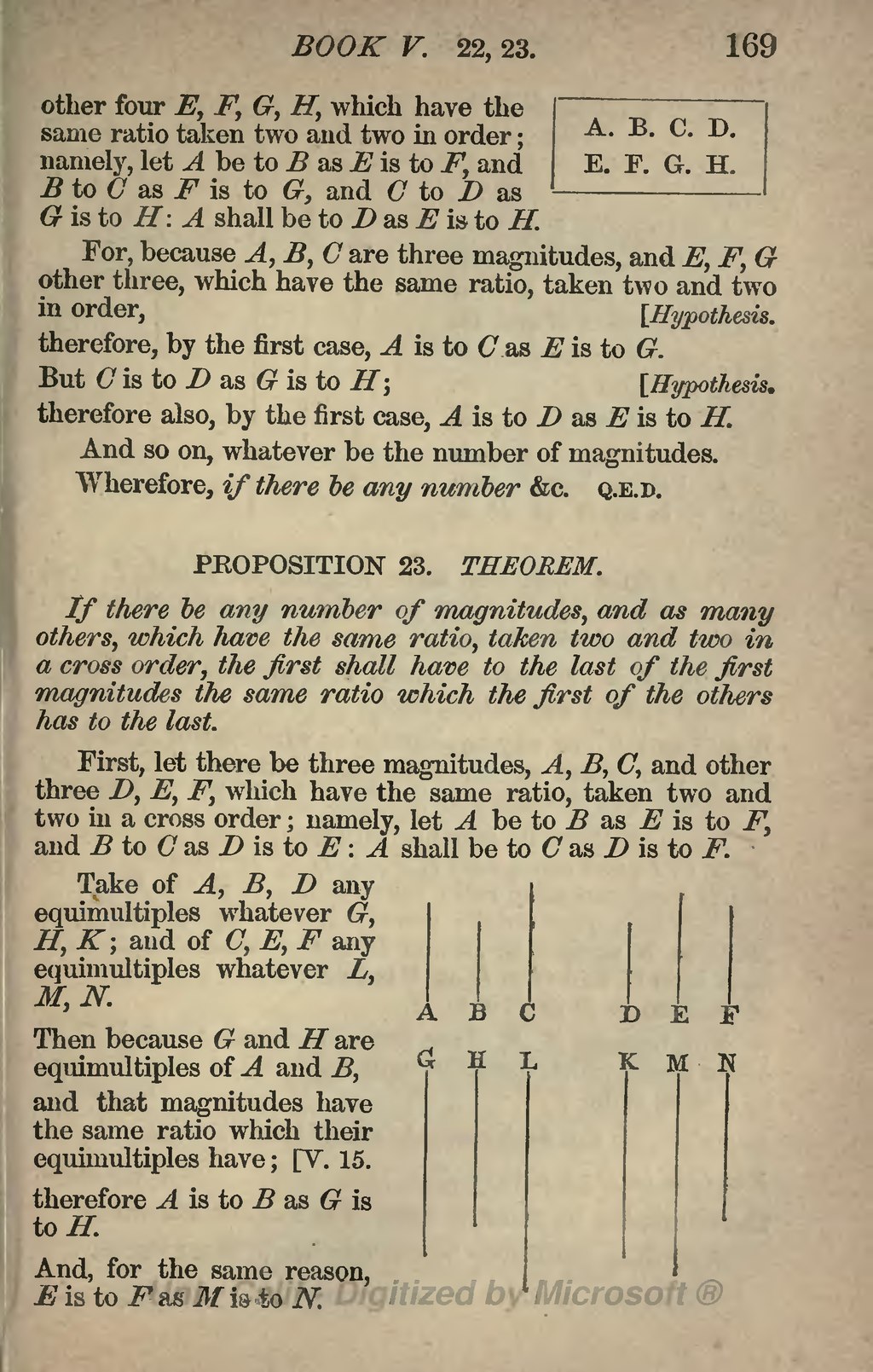 other four E, F, G, H, which have the same ratio taken two and two in order; namely, let A be to B as E is to F, and B to C as F is to G, and C to D as G is to H: A shall be to D as E is to H.
other four E, F, G, H, which have the same ratio taken two and two in order; namely, let A be to B as E is to F, and B to C as F is to G, and C to D as G is to H: A shall be to D as E is to H.
For, because A, B, C are three magnitudes, and E, F, G other three, which have the same ratio, taken two and two in order, [Hypothesis.
therefore, by the first case, A is to C as E is to G.
But C is to D as G is to H; [Hypothesis.
therefore also, by the first case, A is to D as E is to H.
And so on, whatever be the number of magnitudes.
Wherefore, if there be any number &c. q.e.d.
PROPOSITION 23. THEOREM.
If there be any number of magnitudes, and as many others, which have the same ratio, taken two and two in a cross order, the first shall have to the last of the first magnitudes the same ratio which the first of the others has to the last.
 First, let there be three magnitudes. A, B, C, and other three D, E, F, which have the same ratio, taken two and two in a cross order; namely, let A be to B as E is to F, and A to C as D is to E: A shall be to C as D is to F.
First, let there be three magnitudes. A, B, C, and other three D, E, F, which have the same ratio, taken two and two in a cross order; namely, let A be to B as E is to F, and A to C as D is to E: A shall be to C as D is to F.
Take of A, B, D any equimultiples whatever G, H, K; and of C, E, F any equimultiples whatever L, M,N.
Then because G and H are equimultiples of A and B, and that magnitudes have the same ratio which their equimultiples have; [V. 15.
therefore A is to B as G is to H.
And, for the same reason, E is to F as M is to N.
